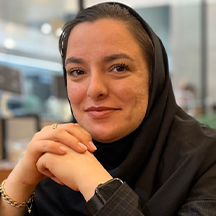In a nutshell
Analysis of data from 30 Iranian provinces over the period 2007-15 indicates that lower income per capita, coupled with higher inflation and higher income inequality, are the primary drivers of early marriage in Iran; religiosity does not seem to be a significant factor.
Policy-makers seeking to reduce child marriage in Iran should focus on economic disparities and promote financial security, particularly in more vulnerable regions.
More equitable income levels reduce the likelihood of parents marrying off their children to wealthier individuals: policy-makers should focus resources on this to combat early marriage.
Child marriage – which is defined by UNICEF (2024) as any marriage before the age of 18 – poses a significant threat to children’s wellbeing, particularly girls (Jensen and Thornton, 2003; Asadullah and Wahhaj, 2019). While research highlights the negative consequences of this practice, understanding why it persists in some parts of the world requires further exploration.
Our recent study (Asnaashary et al, 2024) tackles this gap in knowledge specifically for Iran. Although the country provides official data on early marriage, the reasons behind its prevalence in certain provinces remain unclear. Previous descriptive research has not reached a consensus on the social and economic factors that are driving this disparity (Ahmady, 2017).
We analyse public data on early marriage rates across Iranian provinces from 2007 to 2015. The research method that we use makes it possible to isolate the impact of social and economic factors while accounting for regional variations. Our findings reveal that lower income per capita, coupled with higher inflation and higher income inequality, are the primary drivers of early marriage in Iran. Strikingly, religiosity does not appear to be a significant factor. This research offers valuable insights for policy-makers seeking to address early marriage in Iran by focusing on economic disparities and promoting financial security, particularly in more vulnerable regions.
Early marriage in Iran
Early marriage in Iran is often based on a girl reaching puberty. According to Article 1210 (Note 1) of Iran’s Civil Code, the age of majority for boys is 15 lunar years; for girls, it is nine lunar years (Mizan, 2023). The law allows girls as young as 13 to marry, and boys at 15. Below these ages and above the age of majority, the marriage is conditional on parents’ permission, the interests of the child and a court order (Article 1041 of the Civil Code).
These practices are all about controlling girls and making sure that they are virgins before marriage. Families sometimes marry off young girls to settle arguments or promise them in marriage at birth. Most girls who marry young have no choice about whom they marry or even if they get married at all.
Iran has committed to ending early marriage by 2030, but there are a number of obstacles. The government wants more children to be born and worries that stricter marriage laws would make this harder. Religious views and traditions also make it difficult to change the laws.
Official statistics from Iran’s Census Bureau in 2016 show that 5.5% of women got married before the age of 15. Based on other reports, 17% of girls in Iran are married before the age of 18, and 3% are married before the age of 15 (Human Rights Council, 2017).
Illiteracy is a big factor: people who can’t read or write are more likely to marry young. Based on the 2016 Census of Population and Housing, over 9% of young men aged 15-19 who were married were illiterate, a rate more than four times higher than that of their literate counterparts at 2.13%. Similarly, approximately 4.5% of girls aged 10-14 who were married were illiterate, which is three times higher than the 1.26% share for their literate counterparts in this age group. Education is seen as a way to stop child marriage around the world. In Iran, girls who are married often cannot continue to go to school. This keeps them uneducated, leading to lower self-esteem and personal isolation.
Data and analysis
We use public time-series data on registered early marriages involving girls from the Annual Statistics of the National Organization for Civil Registration of Iran. Since the official data are reported in age intervals rather than by specific ages, we classify all marriages involving girls under the age of 19 as early marriages.
We analyse various factors driving early marriage, focusing on the economic development of provinces by using the logarithm of GDP per capita. We anticipate that economically deprived provinces with lower average incomes will exhibit higher levels of early marriage, as low-income families in these areas might marry off their daughters to reduce household expenses.
We also consider the impact of rising living costs, represented by the consumer price index inflation rate, expecting a positive correlation with early marriage rates. As household purchasing power decreases, families may have stronger incentives to endorse early marriage to alleviate financial burdens.
In addition, we examine the provincial unemployment rate, expecting it to be positively associated with early marriage. Provinces with higher income inequality, as indicated by the Gini index, may reveal the financial dominance of wealthier households, which can undermine the economic stability of lower-income families and compel them to marry off their daughters to richer, often older, men.
Furthermore, we account for the degree of religious activity in provinces by examining the share of household spending on religious goods and services relative to total spending. We hypothesise that higher levels of this spending ratio indicate a greater emphasis on religious activities, potentially leading to higher rates of early marriage. Lastly, we collect data on the proportion of household spending on education-related categories. We expect that provinces with a higher share of educational spending may demonstrate greater respect for gender equality and place increased social importance on the quality of life for children, thus resulting in lower levels of early marriage.
Findings
Although poverty is widely recognised as a major determinant of early child marriage, our findings indicate that macroeconomic factors, particularly inflation and inequality, play an even more significant role. Our study highlights the substantial influence of income, inflation and inequality on child marriage.
Our findings underscore the importance of improving income equality to reduce early marriage. More equitable income levels decrease the likelihood of parents marrying off their children to wealthier individuals. Thus, policy-makers should focus resources on these areas to combat early child marriage.
Addressing income inequality requires large-scale political and economic reforms. For a review of some of the drivers of income inequality after the Islamic revolution in Iran, see Alaedini and Ashrafzadeh 2016, Farzanegan and Alaedini 2016; Farzanegan and Kadivar 2023; Farzanegan and Habibpour 2017; Farzanegan, Gholipour, and Nguyen 2016; Alaedini and Ashrafzadeh 2016; and Salehi-Isfahani 2009.
Recognising the significant impact of macroeconomic variables on early child marriage underscores the government’s crucial role in addressing this issue. This can be achieved through the stabilisation of key economic indicators and the refinement of tax and subsidy policies to address inequality more effectively.
One notable government effort in this regard would be to encourage the lifting of international economic sanctions on the country. These sanctions have increased the share of the vulnerable population in Iran by diminishing the size of the middle class (Farzanegan and Habibi, 2024).
We also question the common belief that religion is a primary driver of early child marriage. Capturing the qualitative aspect of household religiosity is challenging, especially in Iran, where people often conceal their true preferences and exhibit socially accepted attitudes. Nevertheless, our study uses household spending on religious items as a proxy for religiosity and includes province fixed effects to control for province-specific factors such as norms and traditions. Our findings indicate strongly that household spending on religious categories is not significantly associated with early child marriage.
Conclusion
We investigate the economic determinants of early marriage using panel data from 30 Iranian provinces spanning the period from 2007 to 2015. Our results indicate that the primary drivers of early marriage in Iran include economic development, measured by income per capita (which shows a negative correlation), as well as inflation and income inequality (both of which show positive correlations). When accounting for economic factors and fixed effects such as local norms, traditions, and geographical location, we find no significant effect of religiosity, measured by the share of household spending on religious goods and services relative to total spending, on early marriage.
Further reading
Ahmady, Kameel (2017) An Echo of Silence: A Comprehensive Research Study on Early Child Marriage (ECM) in Iran, Nova Science Publishers.
Alaedini, Pooya, and Hamid R Ashrafzadeh (2016) ‘Iran’s Post-Revolutionary Social Justice Agenda and Its Outcomes: Evolution and Determinants of Income Distribution and Middle-Class Size’, in Economic Welfare and Inequality in Iran: Developments since the Revolution edited by Mohammad Reza Farzanegan and Pooya Alaedini, Palgrave Macmillan US.
Asadullah, M Niaz, and Zaki Wahhaj (2019) ‘Early Marriage, Social Networks and the Transmission of Norms’, Economica 86(344): 801-31.
Asnaashary, Mozhgan, Mohammad Reza Farzanegan, Mehdi Feizi and Hassan F Gholipour (2024) ‘Economic Determinants of Child Marriage: Evidence from the Iranian Provinces.’ Children and Youth Services Review 159: 107518.
Farzanegan, Mohammad Reza, and Pooya Alaedini (eds) (2016) Economic Welfare and Inequality in Iran, Palgrave Macmillan US.
Farzanegan, Mohammad Reza, Hassan F Gholipour and Jeremy Nguyen (2016) ‘Housing Costs and Inequality in Post-Revolutionary Iran’, in Economic Welfare and Inequality in Iran: Developments since the Revolution edited by Mohammad Reza Farzanegan and Pooya Alaedini, Palgrave Macmillan US.
Farzanegan, Mohammad Reza, and Nader Habibi (2024) ‘The Effect of International Sanctions on the Size of the Middle Class in Iran’, CESifo Working Paper 11175.
Farzanegan, Mohammad Reza, and Mohammad Mahdi Habibpour (2017) ‘Resource Rents Distribution, Income Inequality and Poverty in Iran’, Energy Economics 66: 35-42.
Farzanegan, Mohammad Reza, and Mohammad Ali Kadivar (2023) ‘The Effect of Islamic Revolution and War on Income Inequality in Iran’, Empirical Economics 65: 1007-26.
Human Rights Council (2017) ‘Report of the Special Rapporteur on the Situation of Human Rights in the Islamic Republic of Iran’.
Jensen, Robert, and Rebecca Thornton (2003) ‘Early Female Marriage in the Developing World’, Gender and Development 11(2): 9-19.
Mizan (2023) ‘قانون مدنی + متن و اصلاحات’.
Salehi-Isfahani, Djavad (2009). ‘Poverty, inequality, and populist politics in Iran‘. Journal of Economic Inequality 7, 5–28 UNICEF, the United Nations International Children’s Emergency Fund (2024) ‘Child Marriage’.





